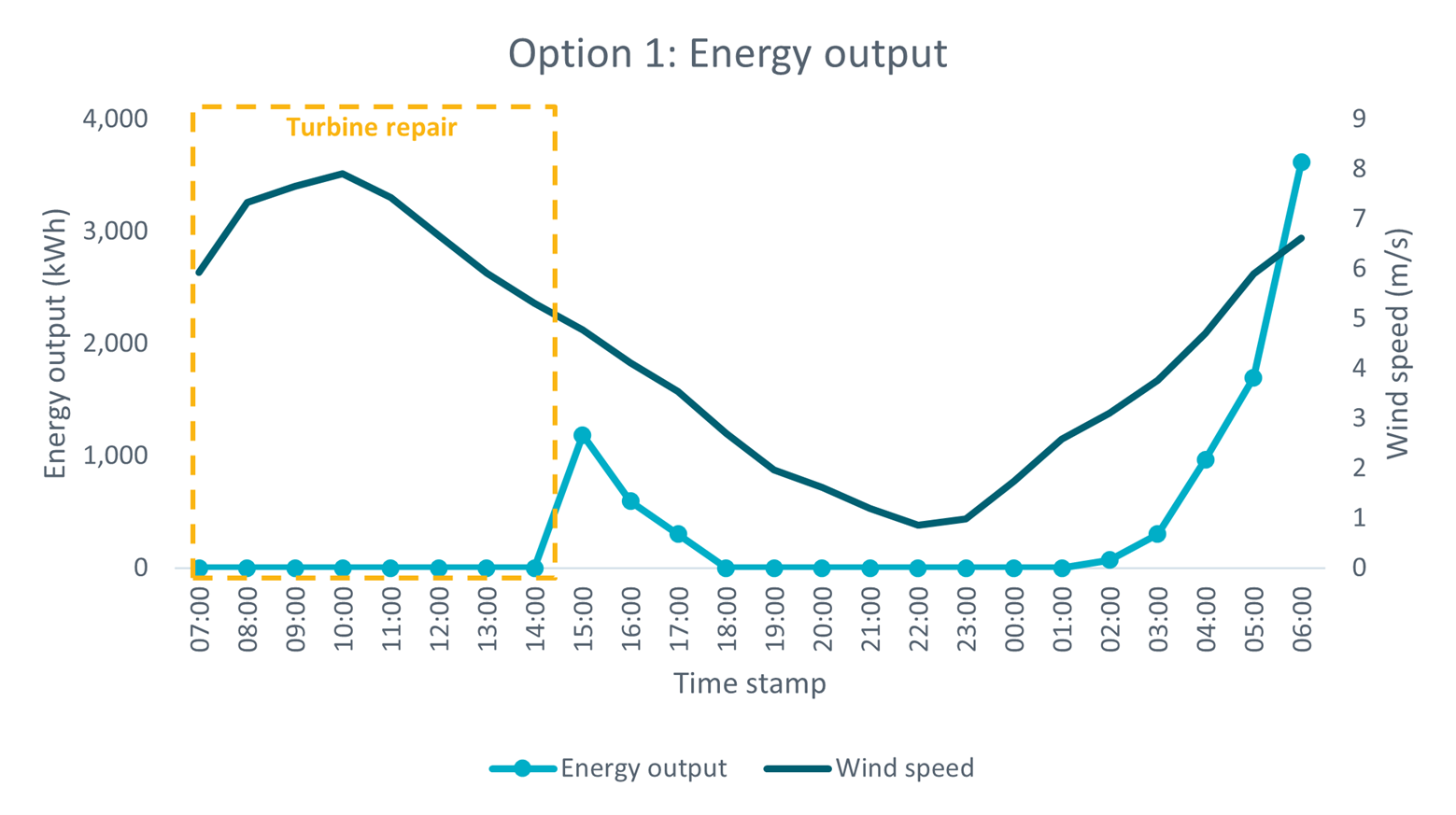This blog was written by Nadezda Avanessova, a member of our Analysis and Insights team who specialises in Operations & Maintenance analysis of offshore wind farms.
Using the right metric to measure wind farm performance is important to reduce revenue losses. Market-based availability gives the best view of potential lost revenue for calculating when to perform repairs or maintenance. However, where electricity price data is not available, other availability-based metrics can be useful.
Availability-based metrics allow an analyst to measure operational wind farm performance, evaluating its performance and assessing different turbine maintenance options (also known as operation and maintenance strategies). Here are some metric definitions:
However, though availability-based metrics can be used as an option for assessing operational performance where data is not available, the variety of availability metrics can create confusion and make it difficult to compare the metric from one piece of work to the other.
You can see this in the examples below.
Let us consider a 24-hour-long operation of a 15MW wind turbine starting at 7AM.
Within this 24-hour time span, this turbine must undergo an 8-hour-long repair starting at 7AM. The figure below shows how wind turbine energy output varies during this 24-hour period according to the wind turbine power curve, the wind speed at the site and turbine outage due to repair.

This gives us the following availability-based metrics;
Capacity factor and production-based availability are particularly low because the repair occurs at a time of high wind speeds, when there is a high potential for energy generation.
If that repair time was shifted to 4PM, where wind speeds are considerably lower and power output is minimal or absent, the time availability would stay the same because it is not related to energy produced, but both the capacity factor and production-based availability would increase by 311%, to 10% and 98% respectively.
This quick example shows why capacity factor and production-based availability are better metrics for measuring the revenue impact of repairs.

The next example (shown above), takes into account electricity prices during the same period as shown in the figure below. In this case, if the repair starts at 7AM, market-based availability is 31%. This is higher than the production-based availability in the previous example because, despite the higher power output, electricity prices in that period of time are low.
If the same repair campaign is shifted to 4PM, market-based availability becomes 91%. This is 7% lower than the production-based availability in the same scenario. This is due to the fact that market-based availability takes into account the electricity price, which is significantly higher between the 4PM-4AM period, in this example.
Taking these examples into account, it shows that market-based availability can be a more optimal metric for measuring and planning the cost of repairs, compared to availability-based data. This is incumbent, however, on ensuring you have the right electricity price data to give you the full picture of what you need to make the most of this method.